The place where the ocean meets a forest
Papua New Guinea is one of the most exciting places for dives. There is a diving site named Deacon’s reef on the north coast of the northern peninsula of Milne Bay. At the spot, the ocean meets a rainforest.
The site locates on a rocky coast which is covered with rainforest. Many trees are prospering over the shore. That is why this dive site has an incredibly photogenic scene.
Walking in the forest
Branches and leaves hang over the sea. The sun’s rays on a tropical island are showering through the gap between the leaves into the sea. The underwater world is like a quiet forest shining with the glow through the trees. It feels as though we are walking through a forest. I had a strange but wonderful sensation of going through the sea and the forest simultaneously at that time. It was a blissful moment that I moved through the shining water slowly and stayed in silence under the lights of the woods for a while.
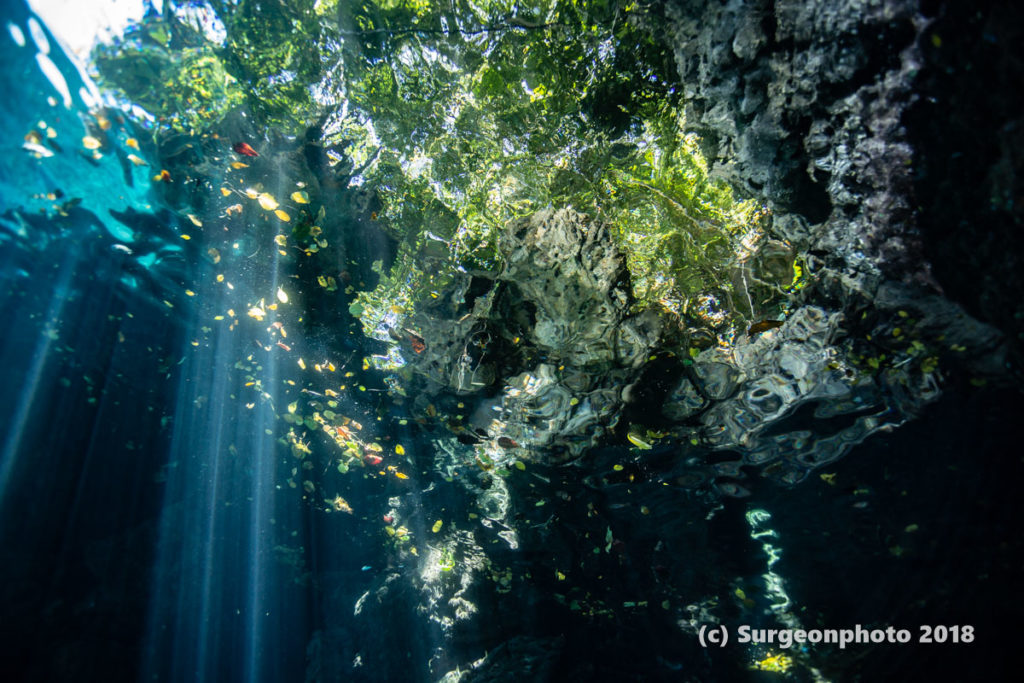

Colors of the sea and forest
We can find many colors in the sea: the blue of the water, blue of the sky, vivid red, yellow and purple on fishes and soft corals. Even rocks are colorful because of sponges covering them. We can see one more color on this site: the green of the forest. It is a fantastic scene that colorful anthias dance, scattering against green lives in the woods.
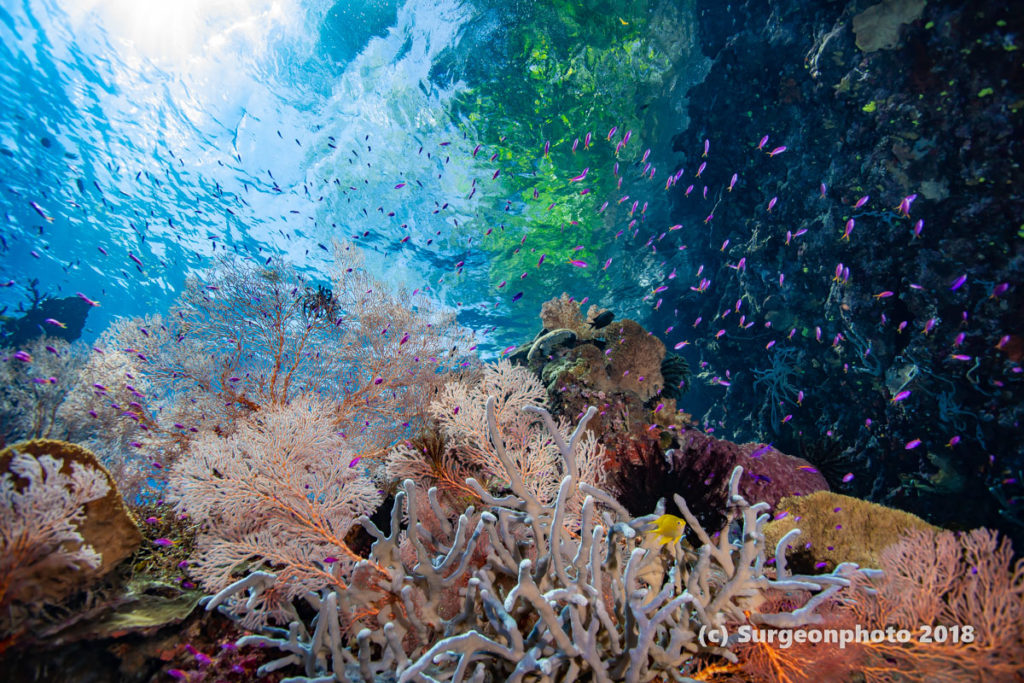
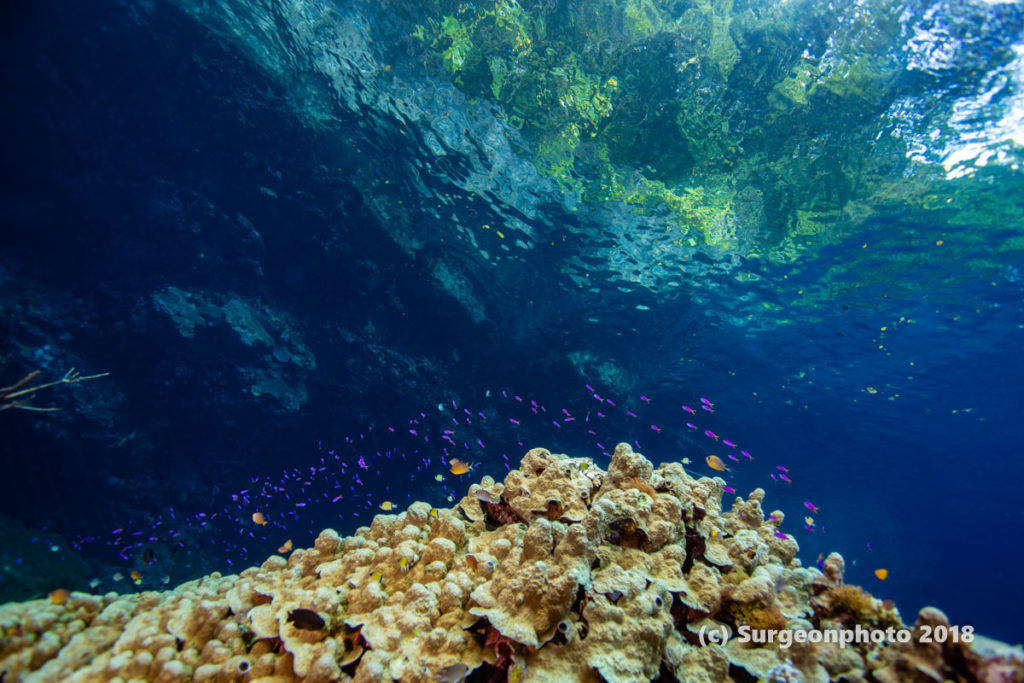
Other highlights
beautiful and vigorous corals
It is OK that you spend the whole dive time admiring the sea and forest collaboration, but there is more to see at the dive site. You can see beautiful and vigorous corals spreading when you leave the rock wall of the coast and dive a little deeper. It feels pretty good while you are swimming slowly over the corals.
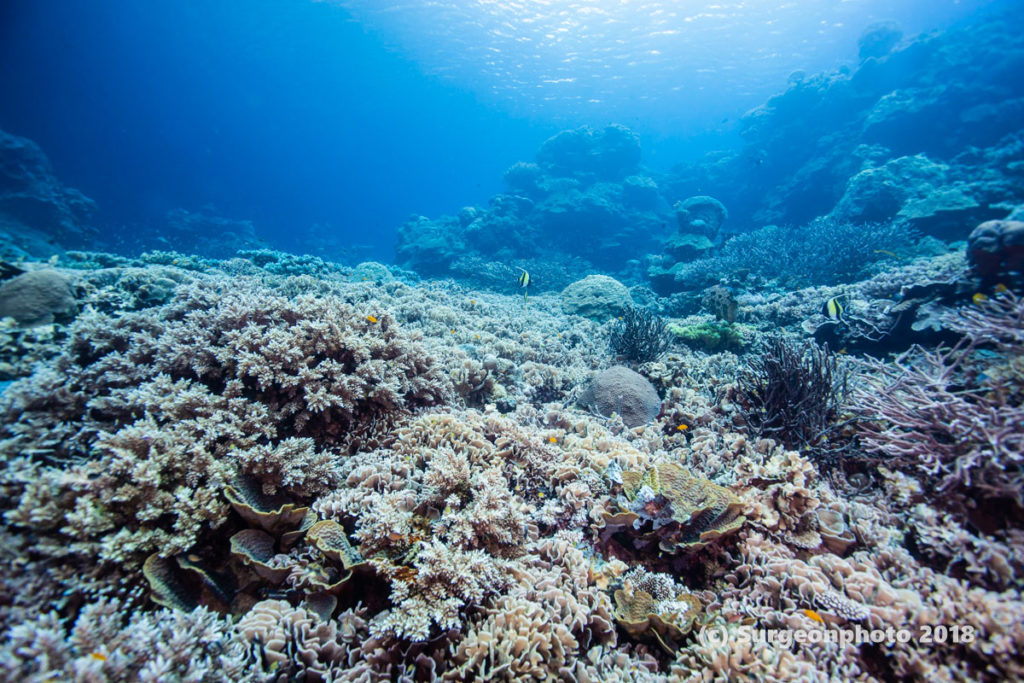
Spreading anthias over the drop off
When you go across the corals, move offshore, there are drop-offs where other kinds of corals prosper. There are swimming around a lot of colorful anthias and damsels. That is a splendid spectacle. The open shore at the site allows some currents to come in. And the moving water makes anthias and damsels dance.

When is good to dive in a day?
It is better to dive in the early afternoon on a sunny day if you’d like to see that the sun rays pour in the water. The higher the sun pours its rays in, the more beautiful the scene is. It is advisable to request your guide to go to the site on the third dive of a day if your boat is going around the north coast of the peninsula, and it is a fine day. You can also request to spend the whole time staying in the area where the forest lights shine in the water if your boat has fewer divers.
A usual course at the site is like that. After entry, you go over the corals heading to drop-off and swim along with the drop-off. After that, you go back through the forest’s rays to the boat. It would be best if you spent time enjoying the forest through the water and the corals and drop-offs with anthias when the sun is still low in the sky.
When is the season?
Generally speaking, it is said that on-season in Milne bay for diving is from October to June, when it is dry season and with warmer water temperature. Still, it is good to dive from July to September if you need better visibility in the water. Water temperature is around 25 degrees Celsius in this season, lower than in on-season, but the water brought from the southern sea with the seasonal wind is crystal clear. Although the powerful south wind in July to September often causes a choppy wave that prevents us from sailing to the outer sea in Milne bay, the north coast of the north peninsula, where Deacon’s reef locates, is quiet because the peninsula blocks the wind. Although it is the dry season in almost the whole country from July to September, it is the rainy season in some parts of the southern district, including Port Moresby and Milne Bay, but we don’t have rain in a whole day, so often.
There are many nice dive sites along the north coast, including Deacon’ reef, but Milne Bay has much more. There are many attractive sites you can expect big fish, or you can spot many kinds of pygmy seahorse. If you would like to visit the outer sea of Milne bay, please choose to come in from October to June when the south wind abates.
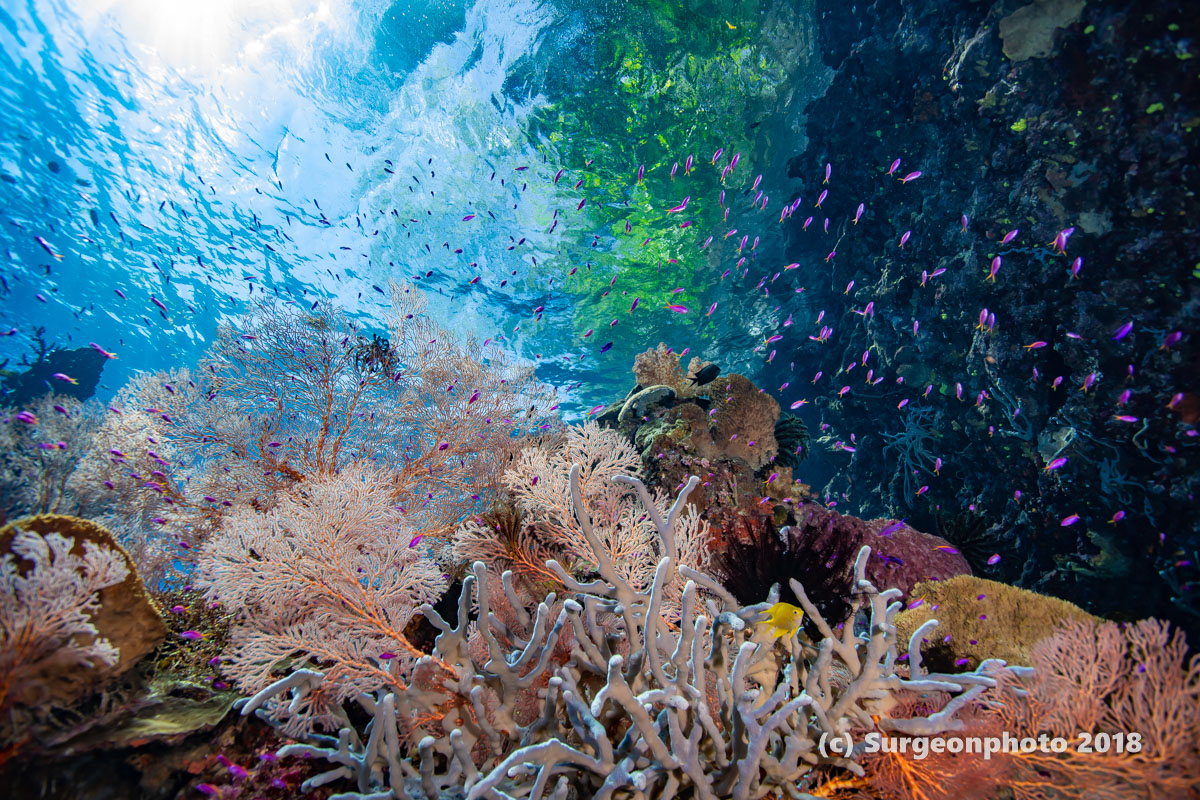
コメント